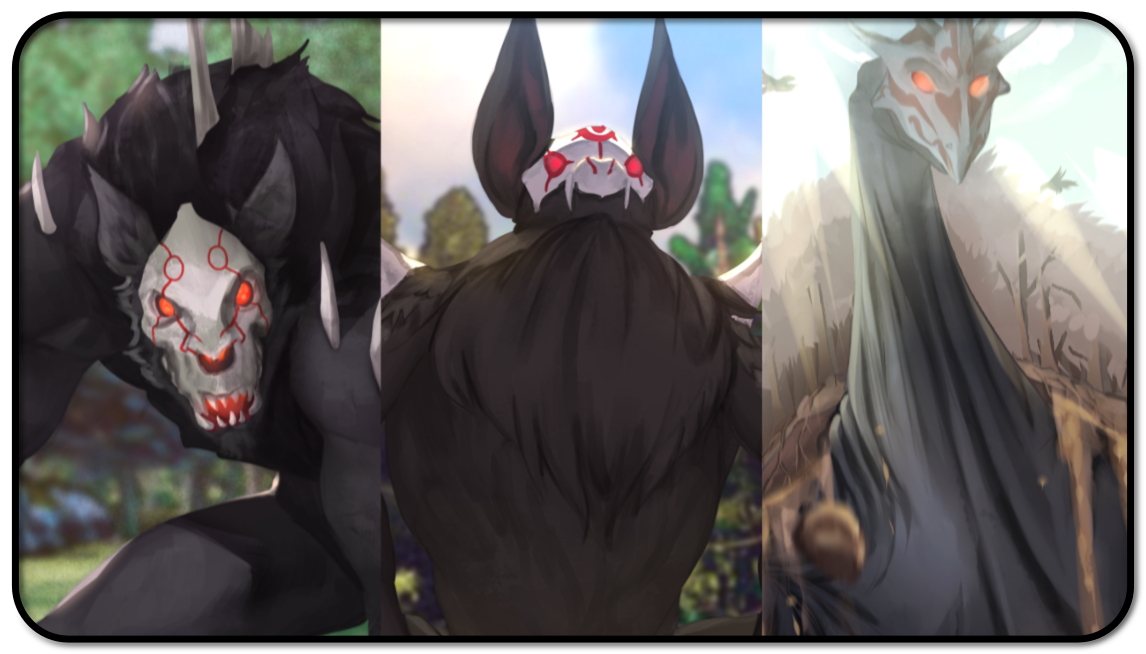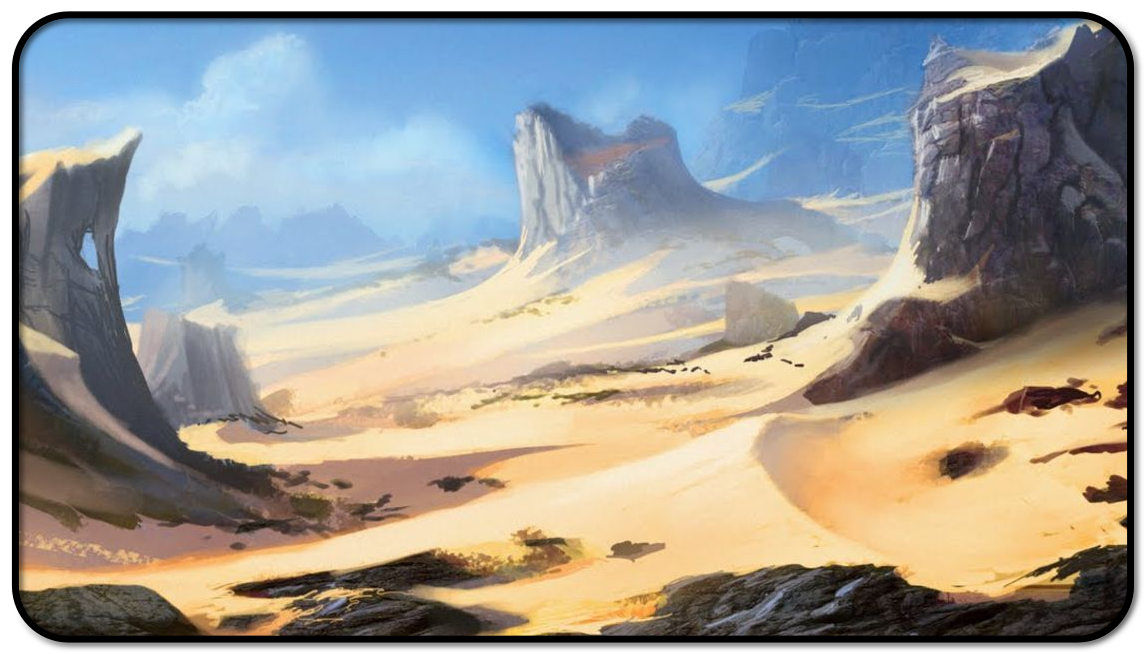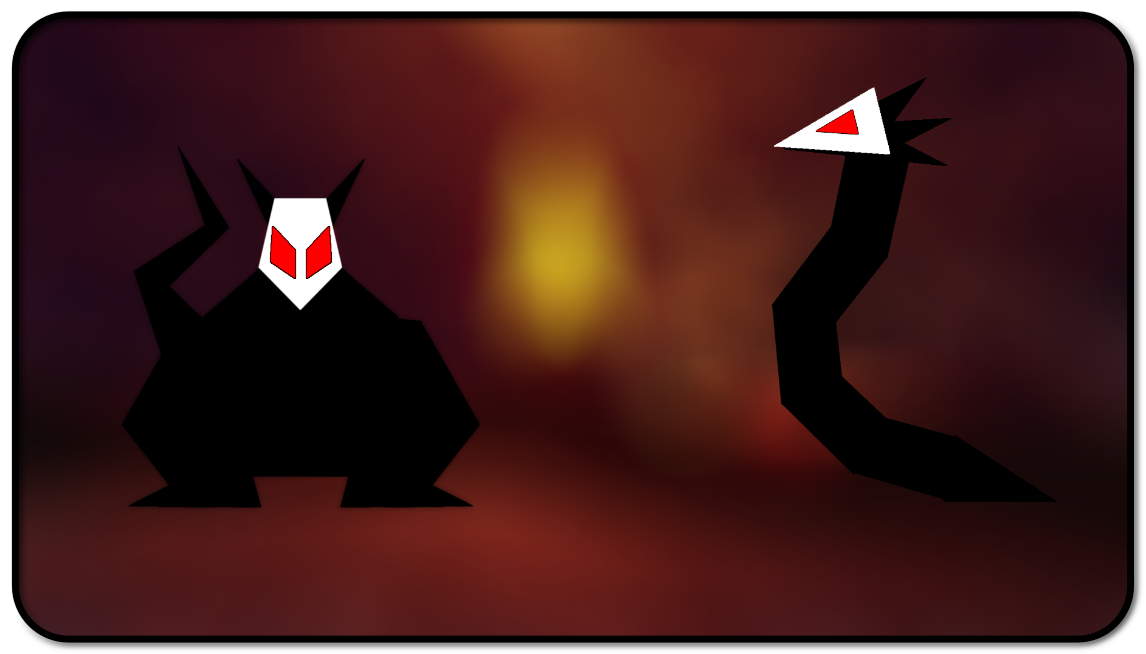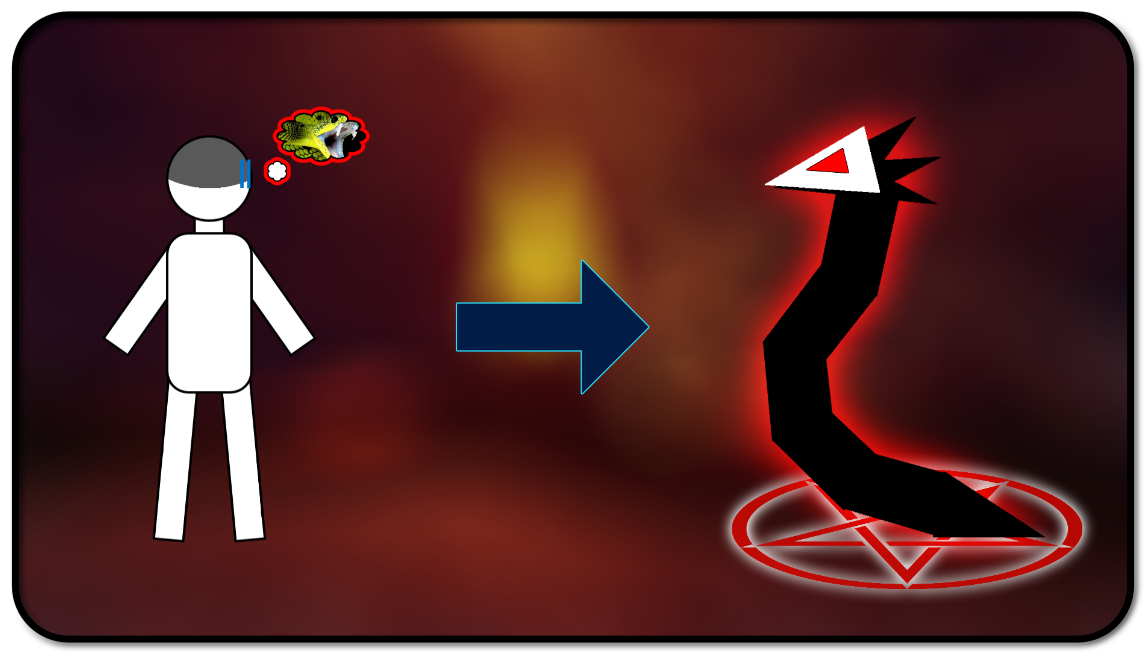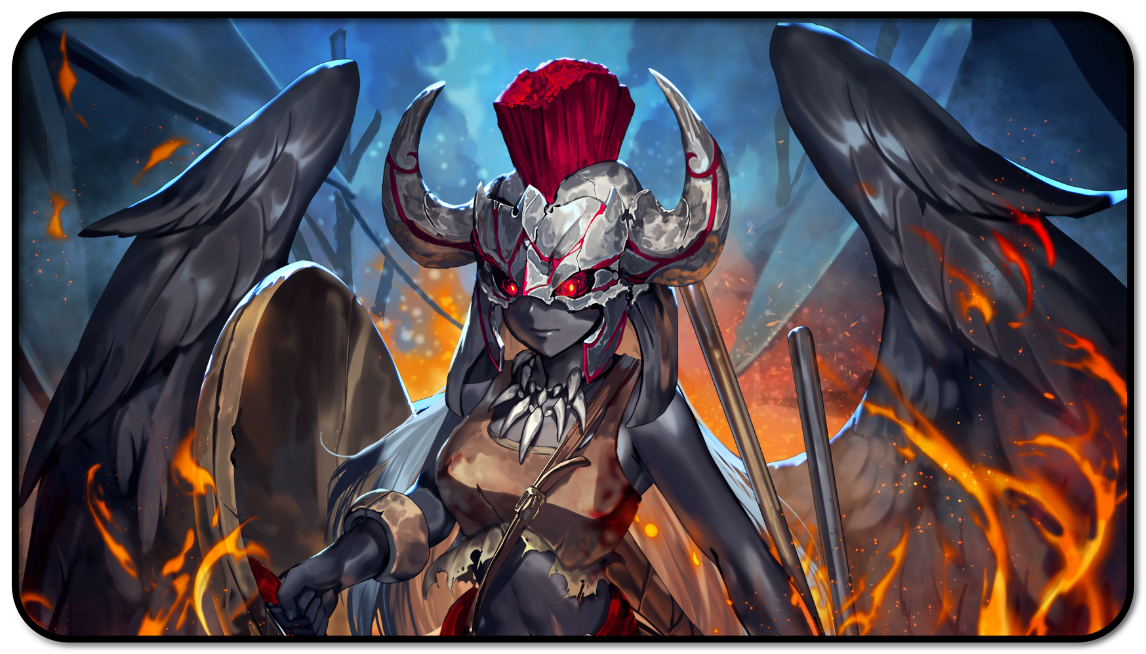The Creatures of Grimm
The natural enemy of humanity.
As long as humanity has existed, so have the creatures of Grimm. Relentless, destructive, insatiable, with their only instinct seeming to be the single-minded pursuing of human suffering. Despite having existed for as long as recorded history if not more, there are still many things we don't know about them and the knowledge we posses hasn't grown much past what was codified centuries ago by the Hunter Dorothea Grimm.
Born and raised in the harsh lands of Vacuo, Dorothea had an unique advantage: a Semblance which allowed her to observe things from a distance, through solid matter and even of sizes too small for the naked human eye (1) . Over the course of three decades she travelled and eventually led expeditions across the Vacuo-Valesian, Mistralian and Atlesian continents, observing -and often times slaying- many species of Grimm and writing down the gathered information in extensive records. These records became the foundation for the codes of conduct and training schools of the vacuonians Hunter caste and, in turn, the cornerstone of modern Hunter discipline and research. The originals are still preserved in the capital of Vacuo.
The Life and Times of Dorothea Grimm, as they came to be called, also serve as an extensive autobiography of her adult life, exception made for her twilight years. At the age of 56 she embarked on one final expedition which she never returned from. Following her passing the term Grimm quickly became the widespread term to refer to the creatures, giving them her name to not forget who let us first tear through the veil shrouding them in mystery.
THE LIFE AND TIMES OF DOROTHEA GRIMM
Before Dorothea embarked on the journey of her lifetime, Grimm went by a number of names, some specific to certain subspecies and others encompassing the entire species as a whole -like nightmares-. A constant background reality for any settler, she came to confront them as a Hunter many times in her youth and eventually realized a basic truth which would then, through her writing, also extend to other schools of knowledge: to defeat your enemy, you must first know it.Born and raised in the harsh lands of Vacuo, Dorothea had an unique advantage: a Semblance which allowed her to observe things from a distance, through solid matter and even of sizes too small for the naked human eye (1) . Over the course of three decades she travelled and eventually led expeditions across the Vacuo-Valesian, Mistralian and Atlesian continents, observing -and often times slaying- many species of Grimm and writing down the gathered information in extensive records. These records became the foundation for the codes of conduct and training schools of the vacuonians Hunter caste and, in turn, the cornerstone of modern Hunter discipline and research. The originals are still preserved in the capital of Vacuo.
The Life and Times of Dorothea Grimm, as they came to be called, also serve as an extensive autobiography of her adult life, exception made for her twilight years. At the age of 56 she embarked on one final expedition which she never returned from. Following her passing the term Grimm quickly became the widespread term to refer to the creatures, giving them her name to not forget who let us first tear through the veil shrouding them in mystery.
Basic Information
Anatomy
The creatures of Grimm obey a peculiar dichotomy where they vary in size and shape with the subspecies, while all individual members of a subspecies are identical and indistinguishable from each other. There are a few traits which are though shared by all Grimm, as described by Dorothea Grimm:
Regarding the extent of their overall senses, it depends on the subspecies just like their body shape -the bat-like Oppels, for example, have such a sensitive sense of hearing that it can be turned against them-. There are two exception: the first is that all Grimm have perfect night-vision, and generally seem to see better in the darkness than in the light.
The second is that all Grimm are high level Sympaths, able to recognize and follow the trail of distress, pain, fear and other negative human emotions to the source over great distances. The range of this ability depends on the intensity of the negative emotion, the number of humans in distress and the age of the Grimm in question.
- Body of Darkness: the main body of a Grimm is made of a pitch black substance that has never been successfully analysed, due to its tendency to dissipate in thin air whenever the Grimm is felled or the body part is separated from the rest. A Grimm's body is one solid black mass that "mimics life while making a mockery of its complexity", is not subdivided in different organs or systems like humans or animals, and can take any shape with apparently no limitations. This substance is commonly called Black Matter.
- Mask of Bone: a much more durable albeit less malleable material than the black substance of a Grimm's body -we could call the latter a Grimm's flesh- goes to form claws, teeth, shells and other various body parts depending on the subspecies of Grimm, with one exception being a mask which every Grimm is born with and which, unlike the rest of their bodies, can be preserved and conserved (2).
- Eyes of Blood: a Grimm is not limited to any set amount of eyes. In most cases, they shine through from beneath their mask and they are always coloured red, with no discernible iris/sclera division, and shining with "malicious crimson light". Just like the main body, a Grimm's eye seems to be a single, uniform red mass which still mysteriously manages to serve the function of an eye.
Regarding the extent of their overall senses, it depends on the subspecies just like their body shape -the bat-like Oppels, for example, have such a sensitive sense of hearing that it can be turned against them-. There are two exception: the first is that all Grimm have perfect night-vision, and generally seem to see better in the darkness than in the light.
The second is that all Grimm are high level Sympaths, able to recognize and follow the trail of distress, pain, fear and other negative human emotions to the source over great distances. The range of this ability depends on the intensity of the negative emotion, the number of humans in distress and the age of the Grimm in question.
Genetics and Reproduction
Paribanu Reiniger, born to a vacuonian caste Hunter and an Atlesian father a hundred years after Dorothea's passing, was the first person to theorize a close relation between the Grimm's sympathic abilities, their birth and the evolution of human civilization as a whole. It's been observed that, historically, the first Grimm seemed to mimic the shape and abilities of wild animals, albeit to a stronger and more monstrous level. The original theory was thus that Grimm replicated the dangers of the environments they happened to be born into.
This eventually presented a number of fallacies, like the presence of Grimm inspired by animals that are nowhere to be found in certain habitats and the impossibility to reconcile certain subspecies of Grimm with any beast. Reiniger, raised on the tales of Dorothea and the folklore of Atlas, realized one day a very particular timing when it came to the first appearance of the Geist subspecies of Grimm. She realized that the first appearance of Geists coincided with the spread of the practice of burying the dead, for fear that they would come back to the living word to possess the living.
Her research unveiled more and more patterns and, despite science never being able to ascertain how an entire new subspecies may birth itself into the world, it's now widely accepted that each new subspecies of Grimm is born by a specific fear of humankind. As human civilization evolved, knowledge and awareness cumulated and with them, new fears and connected Grimm have been born on Remnant.
This eventually presented a number of fallacies, like the presence of Grimm inspired by animals that are nowhere to be found in certain habitats and the impossibility to reconcile certain subspecies of Grimm with any beast. Reiniger, raised on the tales of Dorothea and the folklore of Atlas, realized one day a very particular timing when it came to the first appearance of the Geist subspecies of Grimm. She realized that the first appearance of Geists coincided with the spread of the practice of burying the dead, for fear that they would come back to the living word to possess the living.
Her research unveiled more and more patterns and, despite science never being able to ascertain how an entire new subspecies may birth itself into the world, it's now widely accepted that each new subspecies of Grimm is born by a specific fear of humankind. As human civilization evolved, knowledge and awareness cumulated and with them, new fears and connected Grimm have been born on Remnant.
Growth Rate & Stages
CREATION
No one has ever managed to see a Grimm being 'born'. They don't have sexual organs and they don't possess the instinct to mate, so sexually based reproduction is very unlikely. The three major theories developed over history are:- Cyclical Theory: according to this theory, the Grimm's black matter acts like a living being's Aura and dissolves naturally into the environment. Unlike Aura, though, the black matter will eventually recongregate into a new Grimm. This theory doesn't explain though where the original material came from and it doesn't account for the increased number of Grimm over the ages, nor why the observed size of certain subspecies rise and others fall at random.
- Microscopic Theory: just like other life-forms, Grimm may have had and still have 'small' beginnings. This theory asserts that, just like the many other microscopic life-forms on Remnant, there may exist micro-organisms with sympathic abilities which, upon being prompted by human fear, will then congregate and develop into a Grimm. The flaw of this theory is that Aura is continuously released in the world by all life-forms. The concentration isn't nearly strong enough to be bothersome to a Grimm but it would without doubt be fatal to such micro-organisms.
- Primogenitor Theory: an evolution of the Cyclycal Theory which focuses on the possibility that Grimm may be created by other Grimm or, to be more specific, by one single primordial Grimm with extraordinary sympathic powers that has been spawning new subspecies from the dawn of time. After the first spawning, the Grimm of that subspecies add new black matter to the global pool whenever they get destroyed and the changing sizes of the individual subspecies would depend on the spread of the corresponding fear at any given time. No evidence exist to support the existence of such a Grimm, although it could just be situated in an unexplored part of Remnant. The one flaw is in its inability to explain how new Grimm, once spawned, would be able to go where they need to be.
GROWTH
Grimm don't 'grow' in the traditional sense of the term. They don't weaken with age, their physical shape doesn't change for their entire life -barring damage- and none of their skills or abilities get stronger with time or usage, unless they survive long enough to suddenly change into a new form. This process seems to be completely dependent on the passage of time and also brings with it a change in behaviour. The Grimm are divided in three Weight Classes -so called because of the debunked belief that Growth automatically netted an increase in size-: Normal, Great and Gargantuan.- Normal: this is the most common class of Grimm and most new subspecies are born in this class. Their behaviour is nomadic and aggressive, relentlessly pursuing humans to attack and eat. They more often then not grow into Great Grimms but on rare occasions they may skip directly to Gargantuan.
- Great: also called 'Alphas', Great Grimms tend to be stronger and more menacing versions of their Normal versions, and may also go to acquire new abilities. Very rarely are new subspecies born in this class. Their behaviour is still nomadic but they may refrain from attacking groups of humans without a big enough pack behind them.
- Gargantuan: the rarest and most dangerous Class of Grimm, where no new subspecies are born. Their appearance and abilities can be completely independent of their previous form and their behaviour goes from nomadic to territorial. They lay claim to a certain area and wait for prey to come to them. They are also the only Class of Grimm able to heal from their wounds.
Gargantuan Grimm instead require the combined effort and full might of multiple Hunters to be destroyed and their dangerousness varies wildly, depending on their abilities and the skills of those who would fell them. There have been Gargantuan Grimm taken out by just one team of four and others that have required the sacrifice of a dozen full fledged hunters to take down. Due to their territorial nature, though, they are much more manageable once identified and are usually left alone unless they directly endanger human settlements.
Dietary Needs and Habits
Despite not having any digestive tracts, no Grimm will renounce an opportunity to feast on human flesh and blood, with bones being discarded in the process. There have been recorded instances of a single Grimm eating many times their body weight, which has led researchers to believe that ingested human parts are broken down and turned into more black matter.
FOOTNOTES
1) The accuracy, extension and overall completeness of her records has led some to hypothesize that Dorethea Grimm could also access the full spectrum of light, like infrared.
2) After the death of the Grimm, their masks seem to lose all special properties and become virtually indistinguishable from animal bone.

